
Bavaria, officially the Free State of Bavaria, is a state in the southeast of Germany. With an area of 70,550.19 km2 (27,239.58 sq mi), it is the largest German state by land area, comprising roughly a fifth of the total land area of Germany, and with over 13.08 million inhabitants, it is the second most populous German state, behind only North Rhine-Westphalia; however, due to its large land area, its population density is below the German average. Major cities include Munich, Nuremberg, and Augsburg.
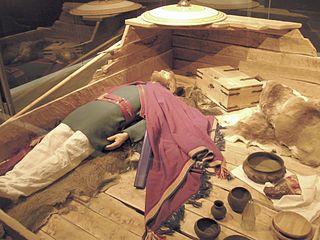
The Baiuvarii, Bavarii, sometimes simply called Bavarians were a Germanic people who lived in or near present day southern Bavaria, which is named after them.
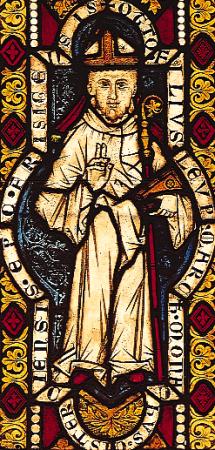
Otto of Freising was a German churchman of the Cistercian order and chronicled at least two texts which carries valuable information on the political history of his own time. He was the bishop of Freising from 1138. Otto participated in the Second Crusade; he lived through the journey and reached Jerusalem, and later returned to Bavaria in the late 1140s, living for another decade back in Europe.
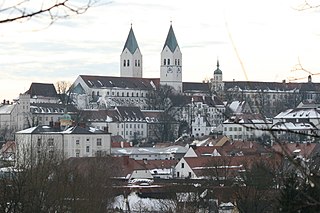
Freising is a university town in Bavaria, Germany, and the capital of the Freising Landkreis (district), with a population of about 50,000.

The County of Hainaut, sometimes spelled Hainault, was a territorial lordship within the medieval Holy Roman Empire that straddled the present-day border of Belgium and France. Its most important towns included Mons, now in Belgium, and Valenciennes, now in France.

Bavarians are an ethnographic group of Germans of the Bavaria region, a state within Germany. The group's dialect or speech is known as the Bavarian language, native to Altbayern, roughly the territory of the Electorate of Bavaria in the 17th century.

The Duchy of Bavaria was a frontier region in the southeastern part of the Merovingian kingdom from the sixth through the eighth century. It was settled by Bavarian tribes and ruled by dukes (duces) under Frankish overlordship. A new duchy was created from this area during the decline of the Carolingian Empire in the late ninth century. It became one of the stem duchies of the East Frankish realm, which evolved as the Kingdom of Germany and the Holy Roman Empire.

East Francia or the Kingdom of the East Franks was a successor state of Charlemagne's empire ruled by the Carolingian dynasty until 911. It was created through the Treaty of Verdun (843) which divided the former empire into three kingdoms.

The Agilolfings were a noble family that ruled the Duchy of Bavaria on behalf of their Merovingian suzerains from about 550 until 788. A cadet branch of the Agilolfings also ruled the Kingdom of the Lombards intermittently from 616 to 712. They are mentioned as the leading dynasty in the Lex Baiuvariorum. Their Bavarian residence was at Regensburg.

Tegernsee Abbey is a former Benedictine monastery in the town and district of Tegernsee in Bavaria. Both the abbey and the town that grew up around it are named after the Tegernsee, the lake on the shores of which they are located. The name is from the Old High German tegarin seo, meaning great lake.

Arbeoof Freising was an early medieval author and the Bishop of Freising from 764.
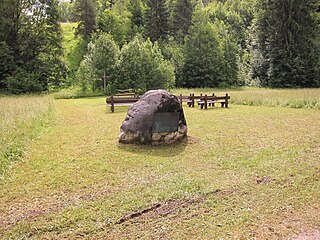
Scharnitz Abbey was a Benedictine monastery in Mittenwald in Bavaria, Germany.
Hugbert(also Hukbert) of the Agilolfings was duke of Bavaria from 725 to 736. He was son of the duke Theudebert and Regintrud, the probable daughter of the Seneschal Hugobert and Irmina of Oeren. Hugbert's sister, Guntrud, married Liutprand, later king of the Lombards.

Theodo, also known as Theodo V and Theodo II, was the Duke of Bavaria from 670 or, more probably, 680 to his death. It is with Theodo that the well-sourced history of Bavaria begins. He strengthened his duchy internally and externally and, according to the medieval chronicler Arbeo of Freising, he was a prince of great power whose fame extended beyond his borders.

The Lex Baiuvariorum was a collection of the tribal laws of the Bavarii of the sixth through eighth centuries. The first compilation was edited by Eberswind, first abbot of Niederaltaich, in 741 or 743. Duke Odilo, founder supplemented the code around 748. It is one of the most well documented bodies of Germanic tribal law.

Events in the history of Munich in Germany.
The Aribonids were a noble family of probably Bavarian origin who rose to preeminence in the Carolingian March of Pannonia and the later Margraviate of Austria in the late ninth and early tenth centuries. The dynasty is named after its ancestor Margrave Aribo of Austria. The Aribonids maintained influence in the Duchy of Bavaria, the Austrian march, and other parts of Germany until the early twelfth century, when they disappear.

Saint Nonnosus, also Nonosius, was a prior at the San Silvestre monastery on Monte Soratte north of Rome and later a monk at Suppentonia, near Civita Castellana. He was a contemporary of Saint Benedict of Nursia. Alban Butler has written that “so little information has survived about Nonnosus that he is not especially interesting in himself.” His name does not appear in any ancient martyrology.

The Prince-Bishopric of Freising was an ecclesiastical principality of the Holy Roman Empire from 1294 until its secularisation in the early years of the 19th century.
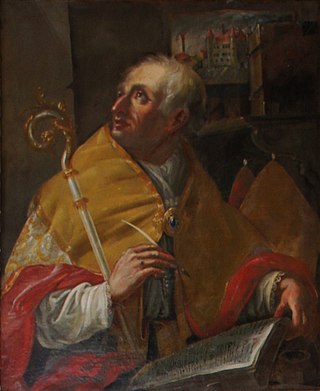
Hitto of Freising was the sixth Bishop of Freising in the Duchy of Bavaria. He held the office from December 811 to 835.


















